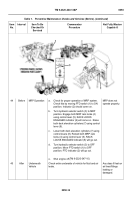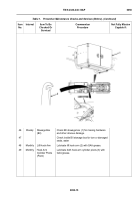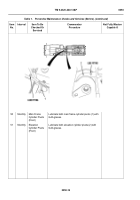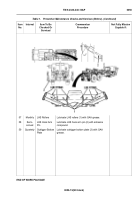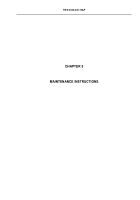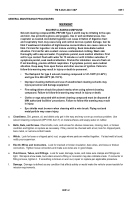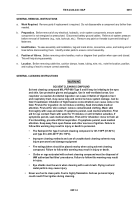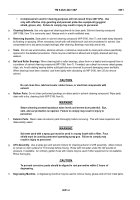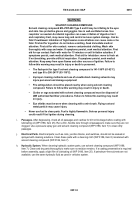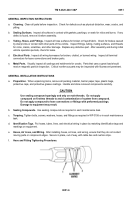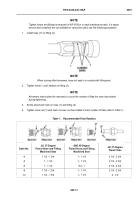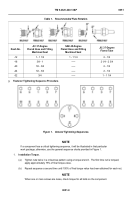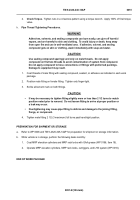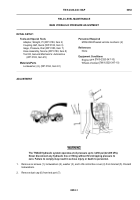TM-9-2320-440-13-P - Page 502 of 1616
TM 9-2320-440-13&P
0051-2
0051
GENERAL MAINTENANCE PROCEDURES
WARNING
SOLVENT CLEANING COMPOUND
Solvent cleaning compound MIL-PRF-680 Type II and III may be irritating to the eyes
and skin. Use protective gloves and goggles. Use in well-ventilated areas. Use
respirator as needed. Accidental ingestion can cause irritation of digestive tract
and respiratory tract, may cause lung and central nervous system damage. Can be
fatal if swallowed. Inhalation of high/massive concentrations can cause coma or be
fatal. First aid for ingestion: do not induce vomiting. Seek immediate medical
attention. First aid for skin contact: remove contaminated clothing. Wash skin
thoroughly with soap and water. If symptoms persist, seek medical attention. First
aid for eye contact: flush with water for 15 minutes or until irritation subsides. If
symptoms persist, seek medical attention. First aid for inhalation: move to fresh air.
If not breathing, provide artificial respiration. If symptoms persist, seek medical
attention. Keep away from open flames and other sources of ignition. Failure to
follow this warning may result in injury or death to personnel.
•
The flashpoint for type II solvent cleaning compound is 141-198ºF (61-92ºC)
and type III is 200-241ºF (93-116ºC).
•
Improper cleaning methods and use of unauthorized cleaning solvents may
injure personnel and damage equipment
•
Fire extinguishers should be placed nearby when using solvent cleaning
compound. Failure to follow this warning may result in injury or death.
•
Cloths or rags saturated with solvent cleaning compound must be disposed of
IAW authorized facilities’ procedures. Failure to follow this warning may result
in injury.
•
Eye shields must be worn when cleaning with a wire brush. Flying rust and
metal particle may cause injury.
a.
Cleanliness.
Dirt, grease, oil, and debris only get in the way and may cover up a serious problem. Use
solvent cleaning compound (WP 0186, Item 7) on metal surfaces and soapy water on rubber.
b.
Bolts, Nuts, and Screws.
Check bolts, nuts, and screws for obvious looseness, missing, bent, or broken
condition and tighten or replace as necessary. If they cannot be checked with a tool, look for chipped paint,
bare metal, or rust around bolt heads.
c.
Welds.
Look for loose or chipped paint, rust, or gaps where parts are welded together.
If a bad weld is found,
notify your supervisor.
d.
Electric Wires and Connectors.
Look for cracked or broken insulation, bare wires, and loose or broken
connectors.
Tighten loose connectors and make sure wires are in good shape.
e.
Fluid Hoses, Tubes, and Fittings.
Look for wear, damage, leaks, and make sure clamps and fittings are
tight.
Wet spots show leaks, but a stain around a fitting or connector may also indicate a leak.
If connector or
fitting is loose, tighten it.
If something is broken or worn out, repair or replace per applicable procedure.
f.
Damage.
Damage is defined as any condition that affects safety or would make the vehicle unserviceable for
mission requirements.
Back to Top

